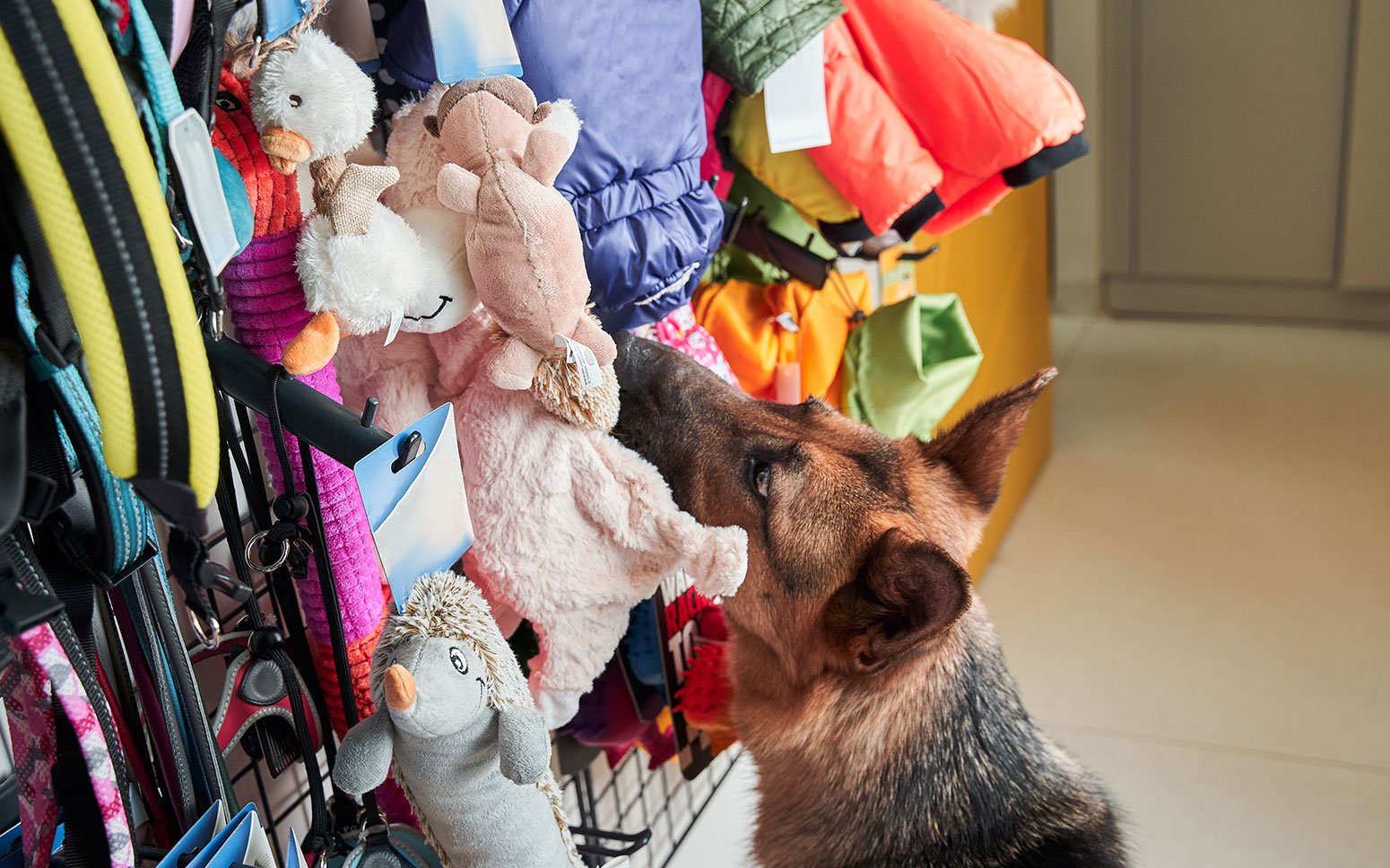Share this
Millennials Still Cough Up Big Bucks on their Furbabies
by Surefront on Jun 16, 2023 8:39:00 AM
Home > Blog > Millennials Still Cough Up Big Bucks on their Furbabies
Table of Contents- What demographic spends the most on pets?
- How much do millennials spend on pets?
- How will millennial pet spend evolve in years to come?
- Why aren’t millennials spending more on their pets?
- How can retailers balance affordability with consumers’ fur baby fixation?
Millennials and their furbabies are a tale as old as time. Or, at least, a tale as old as the past decade. Millennials have even been called the “Fur Baby Boom Generation.” But how much money do millennials spend on pets? Like many common misconceptions about millennials, the idea that they spend way more on their pets than any other demographic is no longer true.
To be fair, elder millennials were once the biggest spenders on their hirsute companions. But pet spend has increased across the board. Between 2012 and 2021, the average pet spend in the U.S. increased by a whopping 67%, from $460 a year in 2013 to $770 per year in 2021.
So, how much money do millennials spend on their pets today? And, if millennials are no longer the biggest batch of benefactors for their four-legged friends, what demographic spends the most on pets today? Let’s take a look.
What demographic spends the most on pets?
This one will surprise you. Statista reports that, in 2021, US pet owners between the ages of 35 and 44 spent the most on their fluffy companions. Although elder millennials compose part of this demographic, millennials are actually no longer the biggest spenders on their pets.
Inflation and the global pandemic took a toll on millennials’ pet spend. However, it shouldn’t surprise you that millennials still get the credit. That’s because the demographic that actually spends the most on pets is the Forgotten Generation: i.e. ye olde Generation X.
According to a 2021 study by the Bureau of Labor Statistics, the U.S. annual pet spend by demographic looks like this:
Generation Z: $369
Millennials: $679
Generation X: $949
Baby Boomers: $842
Silent Generation: $495
However, it’s also worth noting that the dollar amount alone doesn’t quantify the percentage of each generations’ income that they’re coughing up on their furbabies. Although they have the lowest number, the Silent Generation actually spend the largest percentage of their income on pets.

How much do millennials spend on pets?
Back to how much money millennials spend on pets. Unlike Boomers, millennials spend slightly more on themselves than they do on their hairy kindred. Millennials actually spend the smallest percentage of their income (.74%) on their pets than any other demographic. In contrast, the Silent Generation spends 1.18% of theirs.
But, before you all resume playing the old “selfish millennials” violin, remember that most millennials –– like Gen Z –– are still establishing themselves in their careers.
As such, investments in personal item categories like apparel and cosmetics may be more of an investment in building their future than a personal indulgence.
How will millennial pet spend evolve in years to come?
So, will you soon hear that millennials are also killing the pet care industry? The answer, in short, is “probably not.” Unlike Gen Z, which looks at their pets as their best friend, and unlike Boomers, who view their pets in more traditional, servile roles, millennials view their pets as their children.
According to APPA predictions, pet spending will keep its YoY increase rate, reaching $143.6 billion in 2023. While millennials may forego indulgences for their pets –– holiday costumes, pricey treats, and fresh food services –– they still view their pets as part of their family. As such, even economic fluctuations and massive student debt are unlikely to cause millennials to scrimp on the basics of pet care.

Why aren’t millennials spending more on their pets?
We now know that millennials are not the demographic that spends most on pets. Millennials have less savings than their predecessors. This dovetails with massive loads of loan debt to create a scary economic climate for the avocado toast generation.
As such, oft-accused millennials are more susceptible to economic fluctuations –– such as recessions, pandemics, and job scarcity. This may explain why, after the pandemic, millennials are spending less on their beloved fur-babies as they strive to achieve economic security.
Boomers and Silents, on the other hand, have fixed retirement incomes and savings to draw upon in difficult times. Many Boomers and Silents are nearing (or well past) retirement age, so they don’t have to worry about dressing to impress their colleagues.
Already at a healthy place in, or done with, their respective careers, mature pet parents have the economic security to spend their hard-earned money on their pets –– even if they don’t quite view them as family members.

Fur children sure aren't cheap in 2023
Therein lies the rub, doesn’t it? The consumer demographics that view their pets as “best friends” and “children,” Gen Z and millennials respectively, lack the financial fortitude to spoil their hirsute companions. This means that pet retailers need to find ways to let next gens affordably indulge their fluff monsters.
Consumers want to feel like retailers are aware of their concerns and working to help in any way they can. This means that 2023 isn’t the year for pet stores to roll out cat caviar and tutus, but more a time to strategically help pet owners afford to give their babies the best lives possible.
How can retailers balance affordability with consumers’ fur baby fixation?
Wholesale pricing and memberships can be a big help to consumers during challenging economic times. Petco did this masterfully, rolling out a 2-tier wellness program to help pet owners save on essentials like vet visits, dog food, supplies, and even grooming. Members now visit the stores 2x as frequently, and spend 40% more when they do.
Before a pet retailer can roll out a unified membership program, however, they first need the right infrastructure in place. Product development software can help retail teams manage massive amounts of customer and product data. When product development software is unified, it combines solutions that manage product data, customer data, and the product lifecycle for a more streamlined retail operation.

Closing thoughts
You don’t want your data to be siloed. Your company’s CRM, PIM and PLM solutions shouldn’t operate in a vacuum, either. Surefront is a unified product collaboration platform to power growth and ROI. Our patented PIM, CRM, and PLM solutions streamline the omni channel sales, merchandising and product development processes. By combining these essential functionalities, Surefront creates a single source of truth throughout your product lifecycle, sales and listing processes.
The results? Up to 150% more revenue per employee and a 40% shorter product development cycle is just the beginning. Try our 10x ROI calculator to see your company’s potential profits. Or, skip the noise and book a custom demo with one of our unified product collaboration management experts today. The retail industry evolves quickly and has a lot of moving parts. We do all of the research, so you don’t have to. Stay ahead of market fluctuations, trends and new features by subscribing to our Unified Product Collaboration Management Blog.
Share this
- PLM Software (35)
- PIM Software (29)
- Trending Topics (20)
- Apparel & Fashion (14)
- CRM Software (14)
- PLM Implementation (9)
- Merchandising (6)
- Tech Packs (6)
- Catalog Management (5)
- PLM RFP (5)
- Success Stories (5)
- Sustainability (5)
- Line Sheet (4)
- Luxury Goods & Jewelry (4)
- Product Development (4)
- Retail (4)
- Supply Chain (4)
- Category Management (3)
- Data Import (3)
- Home Furnishings (3)
- Wholesale (3)
- Consumer Packaged Goods (CPG) (2)
- Cosmetics (2)
- Data Export (2)
- Health & Beauty (2)
- Industry Events (2)
- RFQ & Quote Management (2)
- Consumer Electronics (1)
- Import & Export (1)
- Inventory Management (1)
- Pet Stores (1)
- Purchase Orders (1)
- Report Builder (1)
- Textiles & Raw Materials (1)
- Unified Solution (1)
- Vendor Management (1)
- White Paper or Case Study (1)
- March 2025 (3)
- January 2025 (8)
- December 2024 (5)
- November 2024 (3)
- October 2024 (5)
- September 2024 (6)
- August 2024 (2)
- July 2024 (1)
- June 2024 (3)
- May 2024 (4)
- April 2024 (5)
- March 2024 (3)
- February 2024 (2)
- December 2023 (4)
- September 2023 (2)
- August 2023 (5)
- July 2023 (3)
- June 2023 (2)
- May 2023 (2)
- April 2023 (4)
- March 2023 (5)
- February 2023 (3)
- January 2023 (5)
- December 2022 (4)
- November 2022 (3)
- October 2022 (4)
- September 2022 (5)
- August 2022 (4)
- July 2022 (3)
- June 2022 (1)
- May 2022 (1)
- February 2022 (1)
- January 2022 (1)
- September 2021 (1)
- May 2021 (1)
- April 2021 (1)
- February 2021 (1)
- December 2020 (1)
- May 2020 (1)